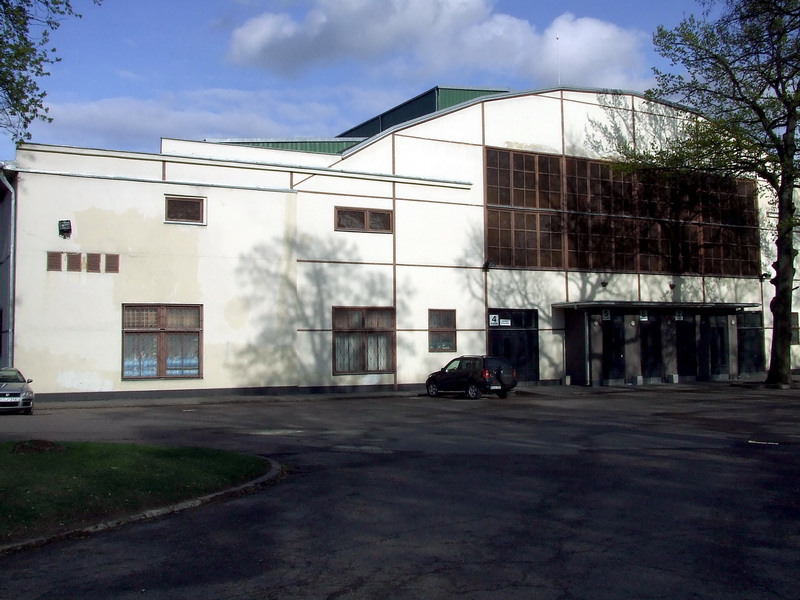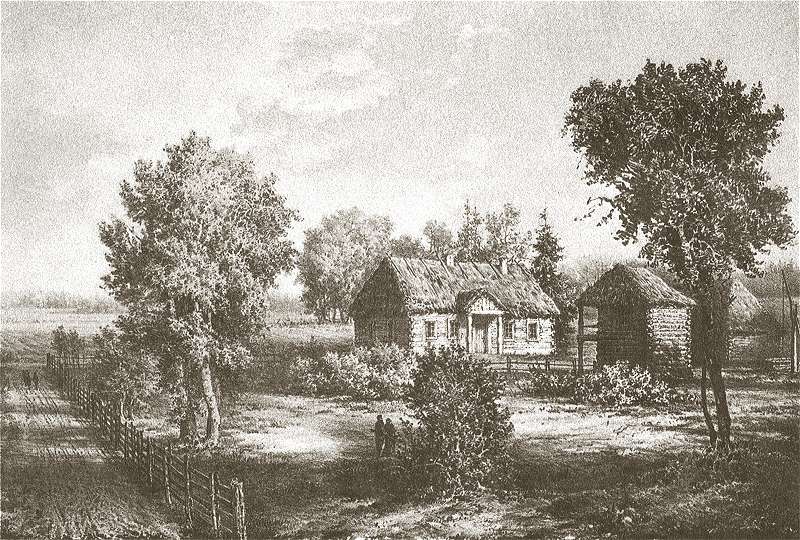|
ńĄŇĺuolynas
ńĄŇĺuolynas () is a public park in Lithuania's second largest city, Kaunas, in the ŇĹaliakalnis elderate. The park covers about 84 hectares and is the largest urban stand of mature oaks in Europe. VydŇęnas Alley serves as the park's northern border. It is a popular recreational destination for the inhabitants of Kaunas. Most of its trees are oaks ranging in age from 100 to 320 years old, but it also holds linden, birch, and maple trees. The current park is what remains of a much larger oak forest that grew around the city, and was connected to the forests in Karmńólava, RumŇ°iŇ°kńós and KaiŇ°iadorys. Those forests were cut down during the 14th, 15th, and 16th centuries, and the timber was used in city buildings, bridges, castles, and ships. The section of the forest between Kaunas and Garliava was cut down in the 19th century. A valley in the park is named for the poet Adam Mickiewicz, who rested there during his days as a teacher in Kaunas schools. In 1938 Tadas Ivana ... [...More Info...] [...Related Items...] OR: [Wikipedia] [Google] [Baidu] |
Kaunas
Kaunas (; ) is the second-largest city in Lithuania after Vilnius, the fourth largest List of cities in the Baltic states by population, city in the Baltic States and an important centre of Lithuanian economic, academic, and cultural life. Kaunas was the largest city and the centre of a in the Duchy of Trakai of the Grand Duchy of Lithuania and Trakai Voivodeship, Trakai Palatinate since 1413. In the Russian Empire, it was the capital of the Kovno Governorate, Kaunas Governorate from 1843 to 1915. During the interwar period, it served as the temporary capital of Lithuania, when Vilnius was Polish‚ÄďLithuanian War, seized and controlled by Second Polish Republic, Poland between 1920 and 1939. During that period Kaunas was celebrated for its rich cultural and academic life, fashion, construction of countless Art Deco and Lithuanian National Revival architectural-style buildings as well as popular furniture, interior design of the time, and a widespread caf√© culture. The city in ... [...More Info...] [...Related Items...] OR: [Wikipedia] [Google] [Baidu] |
ŇĹaliakalnis
ŇĹaliakalnis (literally, "the green hill") is a neighbourhood and Elderships of Lithuania, eldership () in Lithuania's second largest city, Kaunas. ŇĹaliakalnis is located north of the old town and the city center area, between the Neris and Girstupis valleys. It is one of the largest residential areas in Kaunas, with a population of 38,480 in 2006. History ŇĹaliakalnis became part of Kaunas in 1919, when the city became the temporary capital of Lithuania. Kaunas expanded rapidly and the need for a comprehensive plan became evident by 1922. The Denmark, Danish engineer M. Frandsen was invited to devise this plan. In Frandsen's plan, ŇĹaliakalnis was to be an important part of Kaunas, where all the city's administrative functions would be located. This part of the concept was not fulfilled, although the neighbourhood quickly became very popular and many modern residences were built. In 1924-1925 alone, more than 300 plots were created and sold. In accordance with the plan, its stre ... [...More Info...] [...Related Items...] OR: [Wikipedia] [Google] [Baidu] |
Kaunas Zoo
Lithuanian Zoological Garden () previously known as Kaunas' Zoological Garden () is the oldest scientific zoo in Lithuania. It is located in an ńĄŇĺuolynas oak grove park in the south-western ŇĹaliakalnis elderate of Kaunas. The territory of the zoo is . The zoo was founded by the renowned Lithuanian zoologist Zoology ( , ) is the scientific study of animals. Its studies include the structure, embryology, classification, habits, and distribution of all animals, both living and extinct, and how they interact with their ecosystems. Zoology is one ... Tadas Ivanauskas and opened on 1 July 1938 with 40 animals. His prime objective was to educate the visiting public about nature protection and to promote the conservation of endangered species. Within one year, the number of animal grew to 150. The zoo currently has 2166 animals, and is classed as a medium-size zoo according to European zoo standards. It experienced funding difficulties during the 2000s. Lithuanian zoo wa ... [...More Info...] [...Related Items...] OR: [Wikipedia] [Google] [Baidu] |
Kaunas Sports Hall
Kaunas Sports Hall (), also known as the S. Darius and S. Girńónas Hall is the second largest arena of Kaunas, Lithuania. It is the first arena built in the residential ŇĹaliakalnis neighbourhood of Kaunas specially for basketball in Europe and is referred to as a "''Mecca'' of the Lithuanian basketball". The arena's seating capacity is 2,500. Initial seating capacity was 3,500 and the other spectators (up to 11,000) used to have standing room. Its length is and its width is . It is a part of the S. Darius and S. Girńónas sport center, which also includes the nearby national stadium. The arena generally hosts basketball games and concerts. It has served as the home court for '' ŇĹalgiris'' basketball club, competing in the Euroleague and the LKL League till the middle of 2011. It was also used by the Granitas Kaunas team handball club. Kaunas Sports Hall belongs to ŇĹalgiris Group, which operates Darius and Girńónas Stadium and ŇĹalgirio Arena, which are the largest stru ... [...More Info...] [...Related Items...] OR: [Wikipedia] [Google] [Baidu] |
RumŇ°iŇ°kńós
RumŇ°iŇ°kńós is a Lithuanian town (population 1,700), situated east of Kaunas on the northern bank of Kaunas Reservoir. Southern part of the town (including the birthplace of Lithuanian poet Jonas Aistis) is now under the waters of the artificial lake. The 18th century St. Michael Archangel church of RumŇ°iŇ°kńós (rebuilt in the 19th century) was saved and moved to its present place in 1958, when the reservoir was created. History RumŇ°iŇ°kńós was first mentioned in year 1382 as ''Rumsinker'' in the '' Lithuanian route report'' (''Wegeberichte''), prepared by the Teutonic Knights. At that time RumŇ°iŇ°kńós were a center of land or an estate of a local ruler. In 1385 Teutonic knights by returning from siege of Vilnius were attacked by Lithuanians who prevented their crossing of the river Nemunas. In 1387 in the letter of Jogaila to Skirgaila, RumŇ°iŇ°kńós was mentioned as village. At first the plan of RumŇ°iŇ°kńós was linear, but in the first half of 15th century the plan o ... [...More Info...] [...Related Items...] OR: [Wikipedia] [Google] [Baidu] |
Eurobasket 1939
The 1939 FIBA European Championship, commonly called FIBA EuroBasket 1939, was the third FIBA EuroBasket regional basketball championship, held by FIBA. Eight national teams affiliated with the International Basketball Federation (FIBA) took part in the competition. Defending champions Lithuania hosted the tournament, held in Kaunas Sports Hall. Tickets The prices for tickets were high at the time: The price for a seat was 2.5‚Äď5 Lithuanian litas, LTL, and for a standing spot 1.5‚Äď2 LTL. Venue One of the toughest question was where the competition games of the Third European Basketball Championship should be played. First European Championship was held in a primitively adapted exhibitions hall, second ‚Äď in adapted former factory premises. Firstly, there was a thought to organize it in an open-court with a hanging tarpaulin roof, protecting from the rain, in the that time State Court (currently Darius and Girńónas Stadium). Although, such building wasn't suitable nor for t ... [...More Info...] [...Related Items...] OR: [Wikipedia] [Google] [Baidu] |
Tadas Ivanauskas
Tadas Ivanauskas (December 16, 1882 ‚Äď June 1, 1970) was a Lithuanian zoologist and biologist, and one of the founders of Vytautas Magnus University. Biography He was born in Lebiodka Manor (today in Belarus) as a third child of Leonard Iwanowski and Jadwiga Reichel. After finishing Warsaw Gymnasium in 1901, Ivanauskas moved to Saint Petersburg, where he studied in the 1st gymnasium of the city. In 1903, he studied at the natural sciences department of the Saint Petersburg University. He met and befriended Lithuanian students here and learned the Lithuanian language. In 1905, he moved to Paris, studied at Sorbonne University Nature-history faculty and graduated in 1909. Since 1904 he was a member of the Lithuanian society ''Lituania''. Together with another early twentieth-century Lithuanian activist, MichaŇā R√∂mer, Ivanauskas gave lectures about Lithuania in Paris in 1905. In 1909, he again entered Saint Petersburg University, as Russian Empire did not recognize foreign d ... [...More Info...] [...Related Items...] OR: [Wikipedia] [Google] [Baidu] |
Adam Mickiewicz
Adam Bernard Mickiewicz (24 December 179826 November 1855) was a Polish poet, dramatist, essayist, publicist, translator and political activist. He is regarded as national poet in Poland, Lithuania and Belarus. He also largely influenced Ukrainian literature. A principal figure in Polish Romanticism, he is one of Poland's " Three Bards" () and is widely regarded as Poland's greatest poet. He is also considered one of the greatest Slavic and European poets and has been dubbed a "Slavic bard". A leading Romantic dramatist, he has been compared in Poland and Europe to Byron and Goethe. He is known chiefly for the poetic drama '' Dziady'' (''Forefathers' Eve'') and the national epic poem '' Pan Tadeusz''. His other influential works include '' Konrad Wallenrod'' and '' GraŇľyna''. All these served as inspiration for uprisings against the three imperial powers that had partitioned the Polish‚ÄďLithuanian Commonwealth out of existence. Mickiewicz was born in the Russian-parti ... [...More Info...] [...Related Items...] OR: [Wikipedia] [Google] [Baidu] |
Oak Forest Park
An oak is a hardwood tree or shrub in the genus ''Quercus'' of the beech family. They have spirally arranged leaves, often with lobed edges, and a nut called an acorn, borne within a cup. The genus is widely distributed in the Northern Hemisphere; it includes some 500 species, both deciduous and evergreen. Fossil oaks date back to the Middle Eocene. Molecular phylogeny shows that the genus is divided into Old World and New World clades, but many oak species hybridise freely, making the genus's history difficult to resolve. Ecologically, oaks are keystone species in habitats from Mediterranean semi-desert to subtropical rainforest. They live in association with many kinds of fungi including truffles. Oaks support more than 950 species of caterpillar, many kinds of gall wasp which form distinctive galls (roundish woody lumps such as the oak apple), and a large number of pests and diseases. Oak leaves and acorns contain enough tannin to be toxic to cattle, but pigs are able to d ... [...More Info...] [...Related Items...] OR: [Wikipedia] [Google] [Baidu] |
Garliava
Garliava (), is a city in Kaunas District Municipality, Lithuania. Garliava is located south from the Centras (Kaunas), center of Kaunas and has a territory of 3,65 km2. Name Garliava is the Lithuanian language, Lithuanian name of the city. Versions of the name in other languages include Polish language, Polish: ''Godlewo'', Russian language, Russian: –ď–ĺ–ī–Ľ–Ķ–≤–ĺ ''Godlevo'', Belarusian language, Belarusian: –ď–į–ī–Ľ–ĶŐĀ–≤–į ''Gadleva'', Yiddish: ◊í◊ē◊ď◊ú◊Ę◊ē◊ē◊Ę ''Gudleve'', Latvian language, Latvian: ''Garńľava''. History In 1809 built a and named the settlement ''Godlewo'' in his own honour, although Lithuanian language, Lithuanians started calling it ''Garliava''. This year is generally viewed as the year Garliava was founded. It lay along a significant postal route between Saint Petersburg, Kaunas, Marijampolńó, and Warsaw. Godlewski also built a place of worship for Lutheranism, Lutherans and a synagogue for Judaism, Jews. At the time it was part of the Polish D ... [...More Info...] [...Related Items...] OR: [Wikipedia] [Google] [Baidu] |







